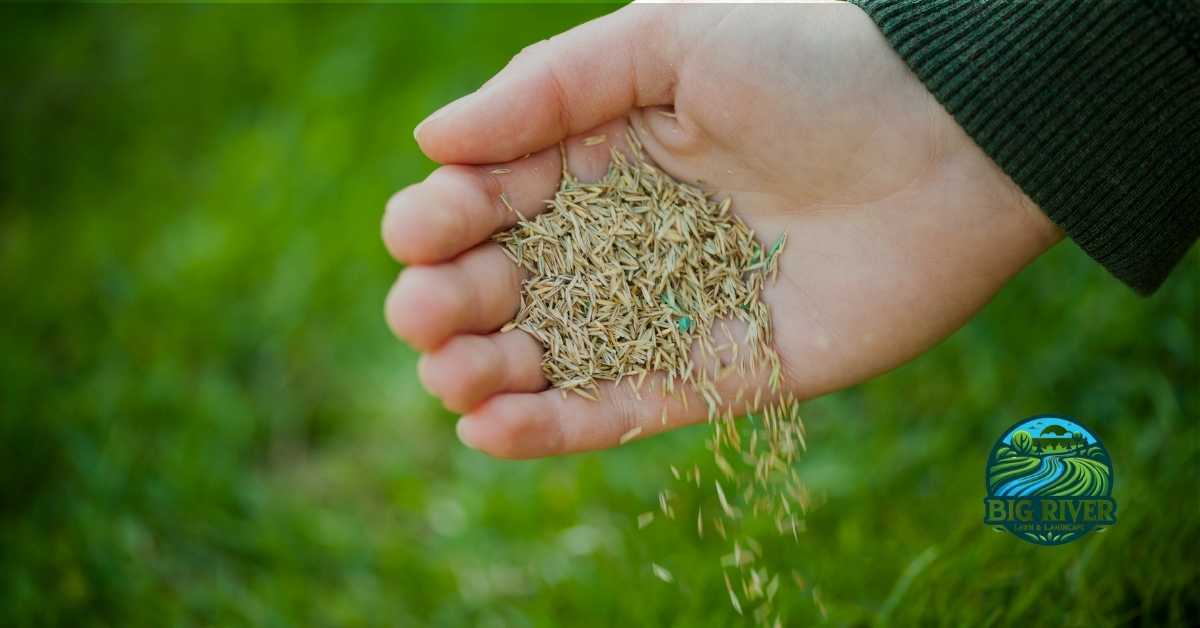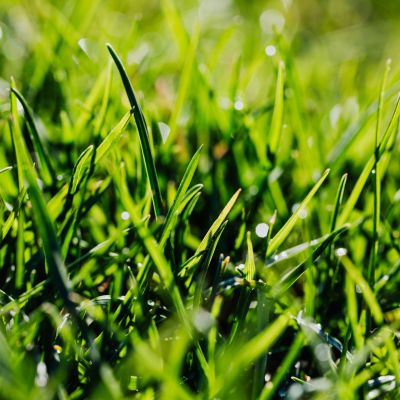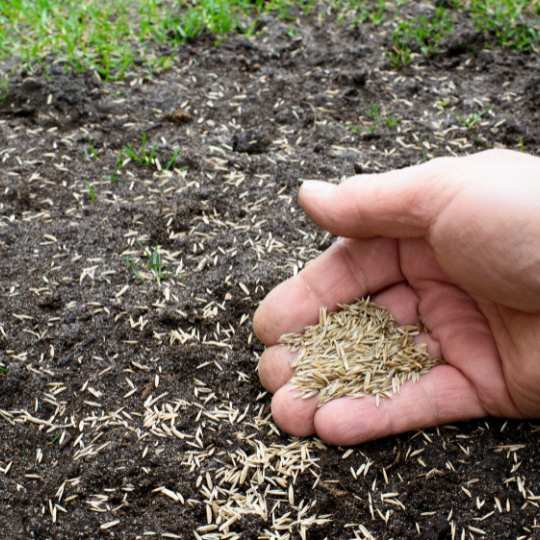When is the best time to seed your lawn? This question often looms large for homeowners looking to establish or rejuvenate their green spaces. The timing of seeding can significantly impact the health and vigor of your lawn. Also, establishing a lush, vibrant lawn is every homeowner’s dream, but achieving that picture-perfect expanse of green requires careful planning and timing. Central to this endeavor is knowing when to seed your lawn.
Timing is everything in the world of lawn care, influencing the success of seed germination, establishment, and long-term health. This comprehensive guide delves into the best practices for determining the optimal seeding time, considering factors such as grass types, climate conditions, and soil health. Whether you’re a seasoned gardener or a novice enthusiast, mastering the art of timing will set you on the path to a thriving lawn that serves as the envy of the neighborhood.
Understanding Your Lawn’s Needs
To cultivate a healthy and resilient lawn, one must first understand the unique requirements of the green carpet that graces their outdoor space. Your lawn is not merely a patch of grass but a dynamic ecosystem influenced by a myriad of factors, from soil composition to climate patterns. By delving into the intricacies of your lawn’s needs, you can unlock the secrets to lush growth and enduring vitality.
Grass Types and Their Growth Characteristics
Before delving into seeding timing, it’s crucial to understand the types of grasses prevalent in your region and their growth characteristics. Different grass species have varying preferences for temperature, moisture, and sunlight. Warm-season grasses like Bermuda and Zoysia thrive in hot climates, while cool-season grasses, like Kentucky Bluegrass and Fescue, prefer cooler temperatures.
Climate Considerations
Climate plays a pivotal role in determining the best time to seed your lawn. In regions with distinct seasons, the timing can vary significantly. Understanding your local climate patterns, including temperature fluctuations and precipitation levels, will guide you in choosing the optimal seeding window.
Soil Conditions and Fertility
Healthy soil is the foundation of a vibrant lawn. Before seeding, assess your soil’s pH, nutrient levels, and compaction. Conducting a soil test can identify deficiencies that may hinder seed germination and growth. Amending the soil with organic matter and fertilizers can create an optimal environment for seed establishment.
Timing Considerations
When it comes to planting your lawn, picking the right time is super important. It’s not just about when you’re free. It’s about when the conditions are just right for those little seeds to grow into a lush carpet of grass. In this part, we’re going to talk about timing.
Spring Seeding
When to seed lawn in spring is a common query among homeowners eager to kickstart lawn growth. Spring offers favorable conditions for seed germination, with warming temperatures and ample moisture. However, competition from weeds and unpredictable weather patterns can pose challenges. Ideal conditions for spring seeding include soil temperatures above 55°F and consistent moisture levels.
Fall Seeding
For many regions, fall emerges as the prime season for seeding lawns. Cooler temperatures and increased moisture create an optimal environment for seed establishment. Additionally, weed pressure tends to diminish in the fall, giving newly seeded grasses a competitive edge. Aim to seed your lawn in early to mid-fall, allowing sufficient time for roots to develop before winter sets in.
Summer and Winter Considerations
Summer and winter present unique challenges for lawn care. Seeding during these seasons requires careful consideration and supplemental measures to ensure success. High temperatures and drought stress can hinder seed germination in summer, while freezing temperatures and snow cover pose obstacles in winter. Implementing strategies such as irrigation and protective coverings can enhance seed survival during these periods.
Assessing Seed Readiness
Before you toss those seeds into the ground, it’s essential to make sure everything’s set for them to grow big and strong. Just like checking the weather before a picnic, you need to assess if the soil is ready, if the seeds are showing signs of life, and if the little seedlings are off to a good start. Check out below for more details:
Soil Temperature and Moisture Levels
Monitoring soil temperature and moisture levels is critical for determining seed readiness. Invest in a soil thermometer to gauge temperature fluctuations, aiming for the ideal range conducive to germination. Adequate soil moisture is equally essential, ensuring sufficient hydration for seedling growth.
Signs of Seed Germination
Visible signs of seed germination, such as seedling emergence and root development, indicate successful establishment. Patience is key during this phase, as germination rates can vary depending on environmental conditions and grass species.
Monitoring Seedling Growth and Development
Continued seedling growth and development monitoring is essential for identifying potential issues early on. Look for signs of stress, including discoloration, wilting, or pest infestations. Adjust watering and maintenance practices accordingly to support healthy growth.
Preparation and Execution
Before you start scattering seeds, getting the soil in top-notch shape is important, and deciding on the best way to plant them. Explore it now:
Soil Preparation Techniques
Prepare the soil thoroughly before seeding to create an optimal grass-growing environment. Conduct a soil test to assess nutrient levels and pH, making necessary amendments based on the results. Aeration and dethatching help alleviate compaction and improve soil structure, promoting root penetration and nutrient uptake.
Seeding Methods
Choose seeding methods that align with your lawn’s size and condition. Broadcast seeding is suitable for large areas, while hand seeding allows for precise placement in smaller spaces. Consider overseeding existing lawns to fill in bare patches and enhance density.
Post-Seeding Care
After seeding, provide consistent care to promote seedling establishment. Keep the soil moist but not waterlogged, watering frequently in the absence of rainfall. Avoid heavy foot traffic on newly seeded areas to prevent soil compaction. Gradually transition to regular maintenance practices once seedlings have been established.
Troubleshooting and Maintenance
Even with the best-laid plans, sometimes things don’t go exactly as expected in the world of lawn care. But don’t worry, every problem has a solution, and every setback is just a chance to learn and grow. Check out how to tackle common issues that might crop up after you’ve seeded your lawn, from pesky weeds to stubborn patches that just won’t fill in.
Common Problems and Their Solutions
Despite meticulous planning, issues may arise during the seeding process. Common problems such as poor germination, weed infestations, and disease outbreaks require prompt attention. Implement targeted solutions, such as selective herbicides or fungicides, to address specific issues and restore lawn health.
Routine Maintenance Practices
Maintaining a healthy lawn extends beyond the initial seeding phase. To sustain optimal growth and vigor, adopt routine maintenance practices, including mowing, fertilizing, and weed control. Regular monitoring and proactive management minimize the risk of setbacks and ensure long-term success.
Wrap-Up
Knowing when to seed your lawn is crucial for achieving maximum health and vitality. By understanding the key factors influencing seeding timing and implementing best practices for preparation and execution, you can cultivate a lush and resilient lawn that enhances your outdoor space for years to come.
When to Seed Lawn FAQs
Best Time to Seed Your Lawn?
The ideal time to seed your lawn is during the late summer or early fall. This allows the seeds to be established before the winter frost sets in. However, springtime lawn care and seeding can also be a suitable time if you have warm-season grasses.
When to Seed and Fertilize Lawn?
Seeding and fertilizing should ideally be done in the early fall. This allows the new grass to be established before the winter months. However, early spring is another good time if you miss the fall window. Proper timing of these tasks ensures a healthy and resilient lawn. Proper timing of fertilization & seeding ensures a healthy and resilient lawn.
When to Seed the Lawn in Fall?
Late summer to early fall is the prime time for seeding your lawn in preparation for the cooler months ahead. Aim for late August to early September for best results.
When to Plant Grass Seed in Spring?
Early spring, after the last frost date in your area, is an excellent time to plant grass seed. This allows the seeds to germinate and establish before the hot summer temperatures arrive.
When to Plant Grass Seed?
The best time to plant grass seed depends on your grass type and local climate. Generally, early fall or early spring are the optimal times for seeding, but this can vary by region.
When to Seed Lawn in NJ?
Are you in a dilemma about when to seed a lawn in NJ? New Jersey’s climate typically favors fall seeding. Aim for late summer to early fall, ideally around late August to early September, to seed your lawn in NJ. This timing allows the grass to establish before the winter cold sets in. Why such a dilemma? We are here in New Jersey for you as an expert lawn seeding service provider.









